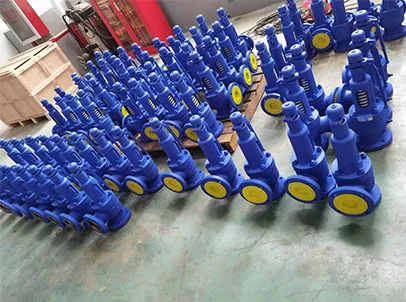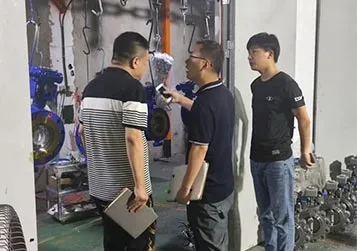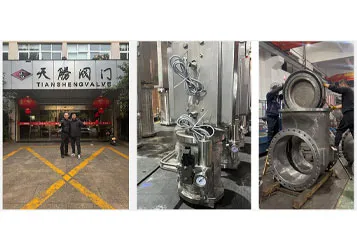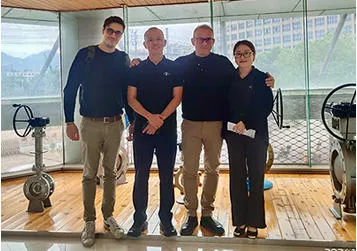- Email:info@tsv-valve.com

 Oct 10,2025
Oct 10,2025In industrial automation control systems, electric valves serve as core devices for achieving the on-off control and flow regulation of pipeline media. Standardized operation and safety maintenance of these valves are directly related to the stability of production processes and the service life of equipment. This article systematically analyzes the correct usage methods of electric valves from three dimensions: operation procedures, safety precautions, and emergency response measures.
Power Connection and Status Confirmation
First, ensure that the electric actuator is connected to a stable power supply. Check and verify that the input voltage (such as 24V DC, 110/220V AC) matches the rated parameters of the actuator. For valves equipped with manual operating devices, it is necessary to first check whether the valve core is in the fully closed position. If the manual mode has been previously used, disconnect the handwheel connection through the clutch device to avoid power conflicts between the motor and the manual mechanism.
Command Sending and Process Monitoring
Send the "open" command through the PLC, DCS control system, or local operation panel. Simultaneously, observe the valve status indicator lights or position feedback signals to track the opening degree change of the valve core in real-time. When the valve reaches the 100% fully open position, the actuator should stop running automatically. Special attention should be paid to preventing continuous power supply in case of a failure of the limit switch, which could lead to motor overload and burnout.
Closing Command Execution and Working Condition Inspection
Before sending the "close" control signal, confirm that the fluid pressure within the pipeline is within the normal range. This step is crucial to avoid valve jamming or excessive torque on the actuator caused by excessive pressure difference. For control valves, the opening degree should be decreased slowly to prevent water hammer effects caused by sudden changes in flow rate.
Full Closure Verification and Power Management
After the valve feedback indicates the 0% closed position, confirm the sealing performance through visual inspection or pressure testing. This ensures that no medium leakage occurs due to the incomplete seating of the valve core. In scenarios of long-term shutdown for maintenance, cut off the power supply to the actuator and hang warning signs to ensure maintenance safety.
(A) Pre-operation Preparation Key Points
Electrical System Inspection
Focus on checking for damage to the insulation layer of the power cord and looseness of the terminal connections to avoid equipment damage caused by short circuits. For electric valves used in explosion-proof environments, additionally inspect the sealing performance of the junction box to ensure compliance with explosion-proof grade requirements.
Mechanical Component Pre-maintenance
Remove rust and debris from the inner cavity of the valve body and the valve stem, and apply an appropriate amount of lubricating grease to keep the transmission mechanism flexible. Check the tightness of the support and flange connection bolts to prevent component loosening due to vibrations during operation.
Operation Frequency Control
Avoid performing full-open and full-close operations too frequently within a short period (it is recommended that the number of cycles per minute should be ≤3 times). Excessive start-stop impacts will accelerate the wear of the gearbox and motor bearings, significantly reducing the service life of the actuator.
Abnormal State Identification
Closely monitor operating noise and temperature changes. When abnormal gear meshing noise occurs, the motor surface temperature exceeds 60°C, or the current value continuously exceeds the rated parameters, stop the operation immediately and troubleshoot the problem. Forcing operation while the equipment is faulty is strictly prohibited.
Sealing Performance Detection
After closing shut-off valves (such as ball valves and globe valves), monitor the upstream and downstream pressures. Confirm the absence of leakage in the sealing pair through bubble detection or pressure drop tests. For control valves (such as butterfly valves and control valves), calibrate the accuracy of the 4-20mA signal feedback to ensure that the deviation between the indicated opening degree and the actual position is ≤1%.
Operation and Maintenance Record Management
Establish a dedicated log to record each operation time, opening degree changes, abnormal situations, and handling measures. By analyzing operation cycle data, potential failures such as gear wear and motor aging can be predicted in advance, enabling preventive maintenance.
In the event of a power outage when emergency valve opening or closing is required, first confirm that the motor has completely stopped running. Switch the actuator to manual mode through the manual switching device and use the accompanying handwheel to operate it slowly to the required position. Apply force evenly during the operation process, and avoid excessive torque that could damage the transmission mechanism.
If the valve core gets stuck during the opening or closing process, immediately cut off the control power supply. Check whether there are foreign objects blocking the valve body and whether the sealing surface is rusted or adhered. For sticking caused by pipeline stress, release the pipeline stress before operating. Forcing operation by increasing the motor torque is strictly prohibited.
When the actuator issues an overheating alarm, stop the operation immediately and cut off the power supply. After the equipment cools down to room temperature, check whether the motor cooling holes are blocked, whether the power supply voltage is stable, and whether the load torque exceeds the rated value. Restart the equipment only after eliminating problems such as poor heat dissipation or overloading.
In short, the reliable operation of electric valves depends on standardized operating procedures and meticulous maintenance management. Operators must strictly adhere to the "Three Checks and Four Determinations" (pre-operation inspection, in-operation inspection, and post-operation review); clearly defined personnel, responsibilities, standards, and cycles). If you have any questions, please contact us. TSV provides high-quality products and services to meet customer needs. Our solutions are committed to providing users with reliability, safety, and cost-effectiveness.
Previous: Valve Symbol Guide
Related News




GET A QUOTE
Talk to Our Expert